Blogs

Inconel 625 Heat Treatment Tutorial: Understanding Techniques and Effects
Introduction
Inconel 625 stands out as a premier nickel-chromium alloy, celebrated for its exceptional strength and unparalleled resistance to extreme temperatures and corrosive environments. Its unique composition, with a remarkably low phosphorus content, enhances its performance in critical applications across diverse industries such as:
- Aerospace
- Marine
- Chemical processing
This article delves into the multifaceted properties and applications of Inconel 625, exploring the intricate heat treatment techniques that optimize its mechanical attributes. By examining the profound impact of these processes on microstructure and corrosion resistance, procurement managers will gain valuable insights into the strategic advantages of this high-performance alloy. Understanding the nuances of Inconel 625 not only informs material selection but also ensures reliability and integrity in demanding operational conditions.
Overview of Inconel 625: Properties and Applications
Alloy 625 is a distinguished nickel-chromium blend recognized for its remarkable strength and exceptional resistance to high temperatures and corrosive environments. With a maximum phosphorus content of just 0.015%, this alloy exhibits enhanced properties that make it ideal for critical applications across aerospace, marine, and chemical processing sectors. Its high alloy content significantly boosts performance in extreme conditions, particularly in environments demanding resilience against oxidation and carburization—key characteristics for applications where reliability and integrity are paramount.
This aligns with the exceptional properties of copper nickel alloys, which also demonstrate superior corrosion resistance and high thermal and electrical conductivity, making them suitable for demanding environments in marine, automotive, and electrical industries. Notably, copper nickel alloys typically consist of:
- Nickel (Ni)
- Molybdenum (Mo)
- Iron (Fe)
providing excellent mechanical properties and high-temperature stability. A significant illustration of processing methods for Alloy 625 is emphasized in the case study on the pickling process for Alloy 625LCF, where particular procedures including inconel 625 heat treatment with sodium hydride baths followed by immersion in sulfuric and nitric-hydrofluoric acid baths guarantee adequate descaling and preservation of integrity and performance characteristics.
Furthermore, alloy 625 is part of a broader family of high-performance materials, including HASTELLOY® X and alloy 718, underscoring its competitive standing in the market. This essential understanding, encompassing the significance of non-sparking tools in explosive settings, lays the groundwork for investigating advanced thermal processing methods, such as inconel 625 heat treatment, that can enhance the performance of alloy 625, ensuring it fulfills the stringent requirements of diverse industrial applications. Additionally, suppliers and manufacturers of electrical insulation and high-temperature materials, such as papers and fabrics, play a critical role in supporting these industries.
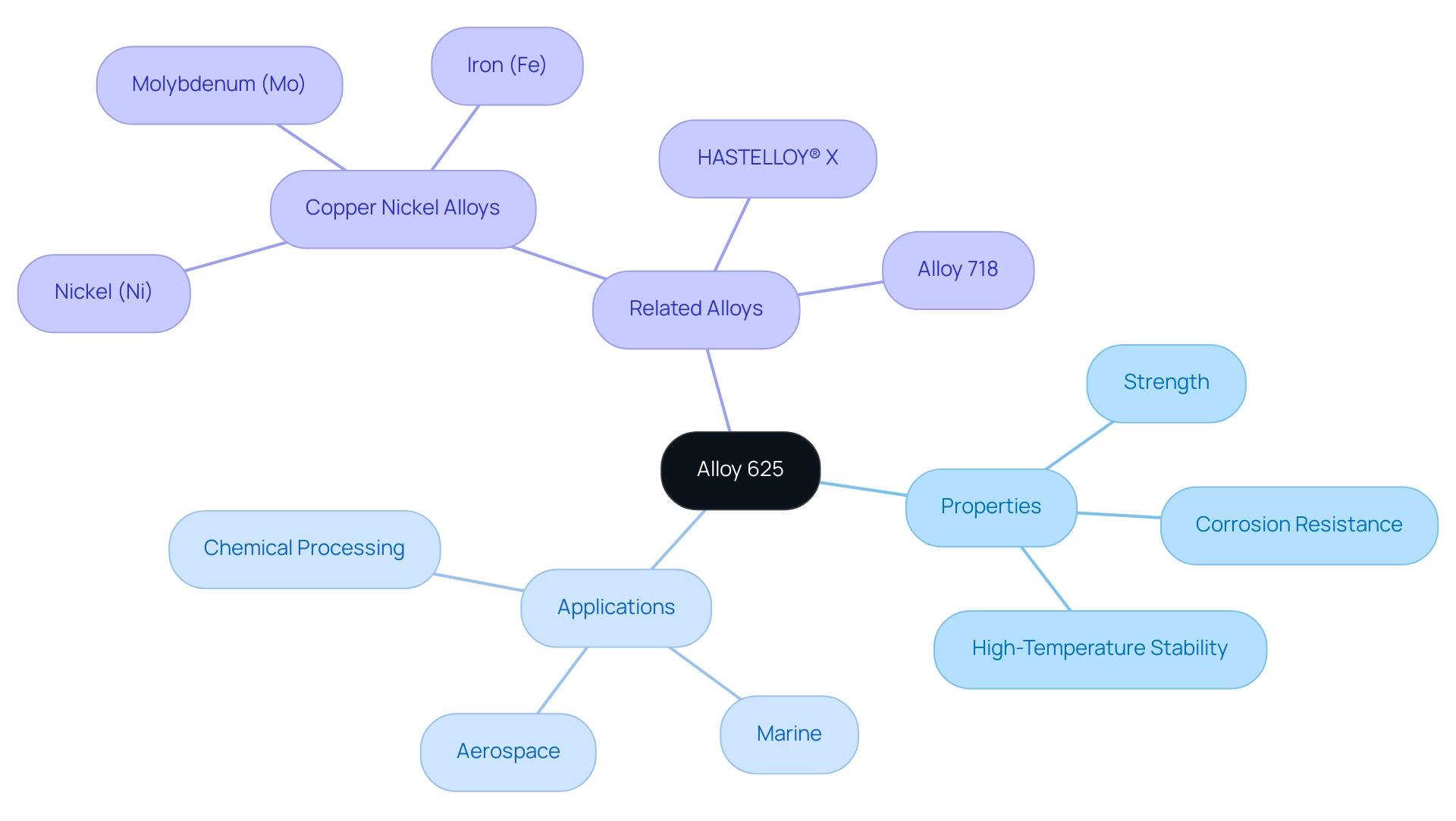
Heat Treatment Techniques for Inconel 625: Methods and Processes
The inconel 625 heat treatment is crucial in the thermal processing of alloy 625, enhancing its mechanical characteristics mainly through methods like solution annealing and aging. Solution annealing is generally performed at temperatures between 1900°F and 2100°F, followed by rapid cooling, which is crucial for achieving a solid solution of alloying elements. This process effectively enhances the material’s ductility and resistance to stress corrosion cracking.
Interestingly, the consistent working hardening phase of solution annealed specimens is shorter than that of other specimens, indicating a substantial difference in mechanical behavior due to thermal processes. Conversely, the aging process, conducted at lower temperatures, facilitates the precipitation of strengthening phases, thereby improving the overall strength of the alloy. Weidong Huang’s study underscores that different thermal processes, particularly inconel 625 heat treatment, significantly affect the microstructure and mechanical characteristics of alloy 625, emphasizing the necessity for customized methods based on particular application needs.
Each thermal process technique presents unique advantages; for instance, solution annealing can lead to superior ductility, while aging can vastly enhance strength. The case study titled “Microstructure and Mechanical Properties of IN 625 and IN 718 Superalloys” provides insights into how additive manufacturing techniques impact microstructural evolution and performance, particularly in high-temperature applications within the aerospace and energy sectors. The strategic selection of these methods is essential in these high-stakes environments, where performance and reliability are paramount.
Recent advancements in thermal processing methods, such as inconel 625 heat treatment, continue to uncover opportunities for enhancing the characteristics of alloy 625, enabling more intricate shapes and economical production options.
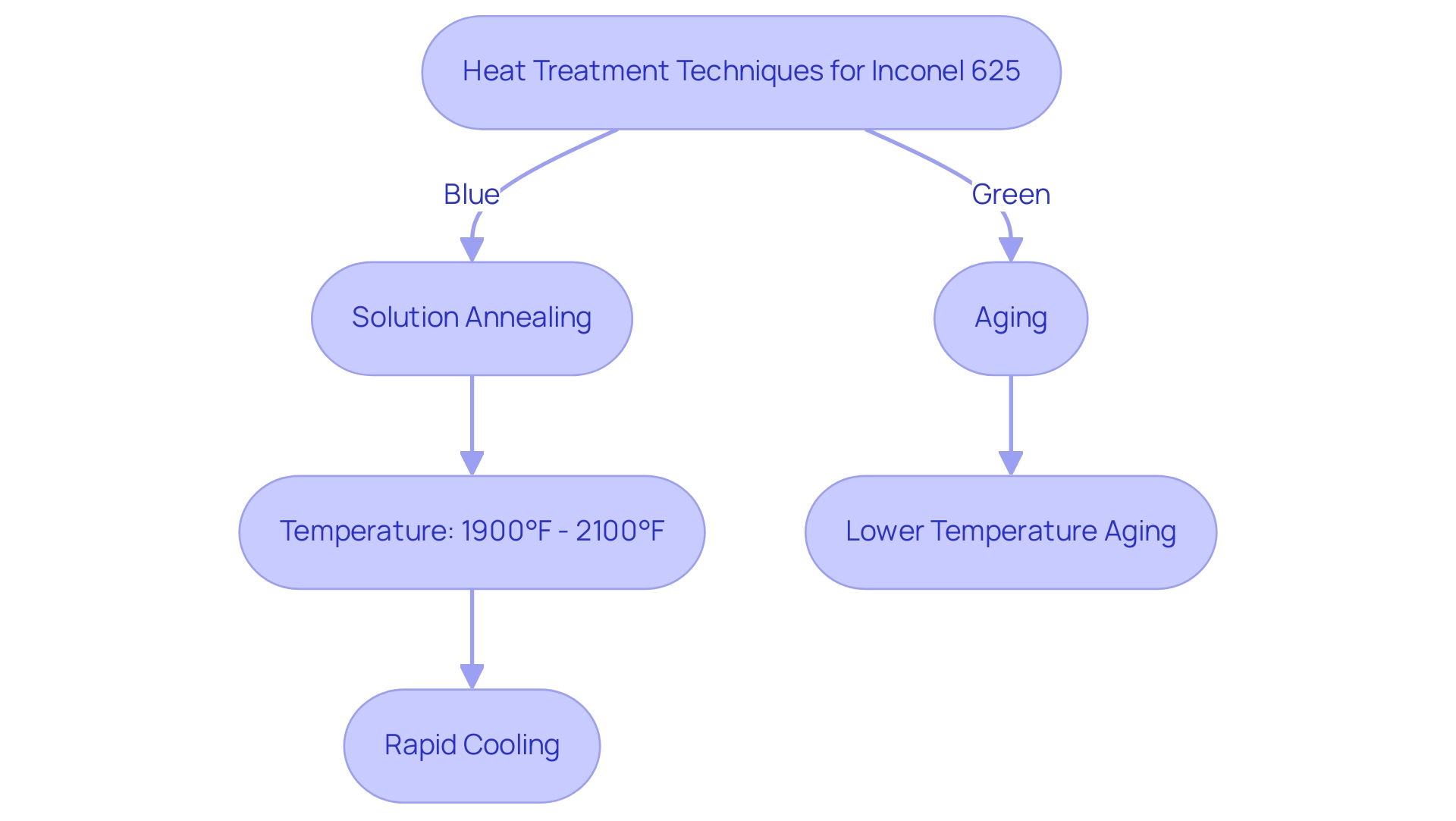
Impact of Heat Treatment on Microstructure of Inconel 625
The microstructure of Inconel 625 is profoundly influenced by thermal processes, particularly during the inconel 625 heat treatment, which fosters a more homogeneous microstructure while mitigating the formation of detrimental phases that could weaken mechanical properties. Research indicates that after solution processing at elevated temperatures, such as those reported in recent studies, a notable recrystallization texture emerges, enhancing material performance. Specifically, findings from Liu et al. highlight how these processes lead to finer grain sizes, which directly correlate with improvements in strength and toughness.
For instance, specimen 1041-7 demonstrated an undeformed length of 38.3 ± 10.6 μm and a deformed length of 63.7 ± 19.3 μm at 980 °C, illustrating the significant changes in ductility and strength. This is further backed by case studies examining the impacts of thermal processes, specifically inconel 625 heat treatment, on hardness and ductility.
For example, strain gradient analysis of hourglass specimens revealed that while heat processing at 900 °C limited ductility recovery, processes at 980 °C resulted in reduced strength and ductility compared to the parent material. As Gregory Jerman observed, ‘Heat processing effects on pristine and cold-worked thin-walled Alloy 625’ emphasize the critical significance of these processes.
Comprehending these microstructural changes is essential for procurement managers seeking to anticipate the performance of this alloy in demanding applications, as they indicate the material’s behavior under operational stresses and environmental conditions.
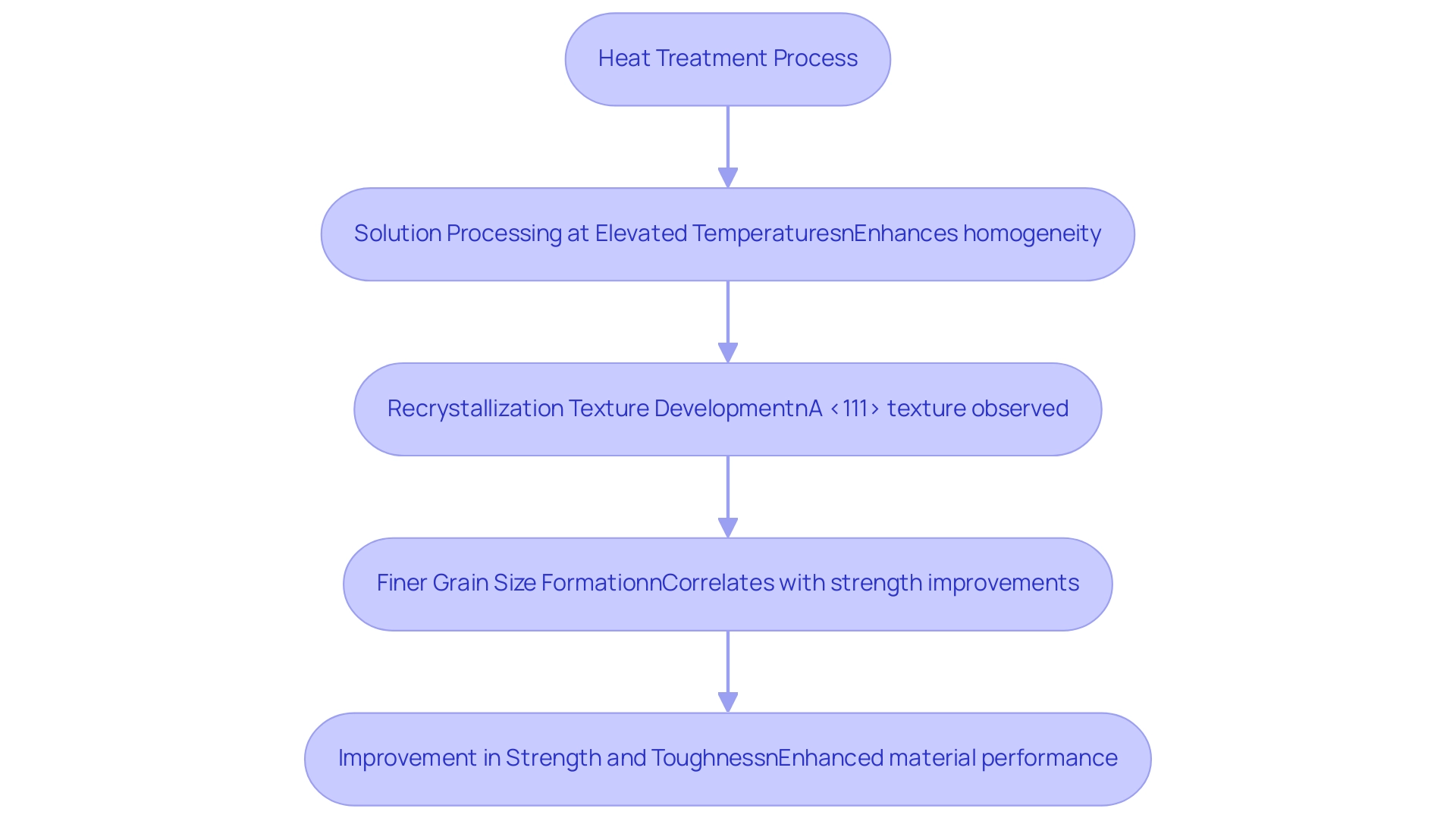
Mechanical Property Enhancements Through Heat Treatment
The inconel 625 heat treatment process is pivotal in enhancing the mechanical properties of this alloy, resulting in remarkable improvements in yield strength, tensile strength, and elongation. Notably, solution annealed alloy 625 can achieve yield strengths exceeding 100 ksi, all while maintaining commendable ductility. Such enhancements, including inconel 625 heat treatment, are vital for high-performance applications, particularly in the aerospace sector and turbine engines, where materials are subjected to extreme stress.
Grasping these property changes enables procurement managers to make informed decisions about the appropriateness of alloy 625 for their specific projects. Recent technological tests conducted on small cylinders corroborate these findings, demonstrating that precise control over deformation and treatment—especially through innovative laser technology—can optimize both strength and plasticity. The tests achieved up to 70% cross-section reduction without surface defects, and the final workpieces met the geometrical requirements set by industry leaders like Pratt & Whitney Rzeszow.
Additionally, the implementation of local laser heating was necessary to mitigate cracks observed in larger cylinders, highlighting the practical applications and challenges faced in the industry.
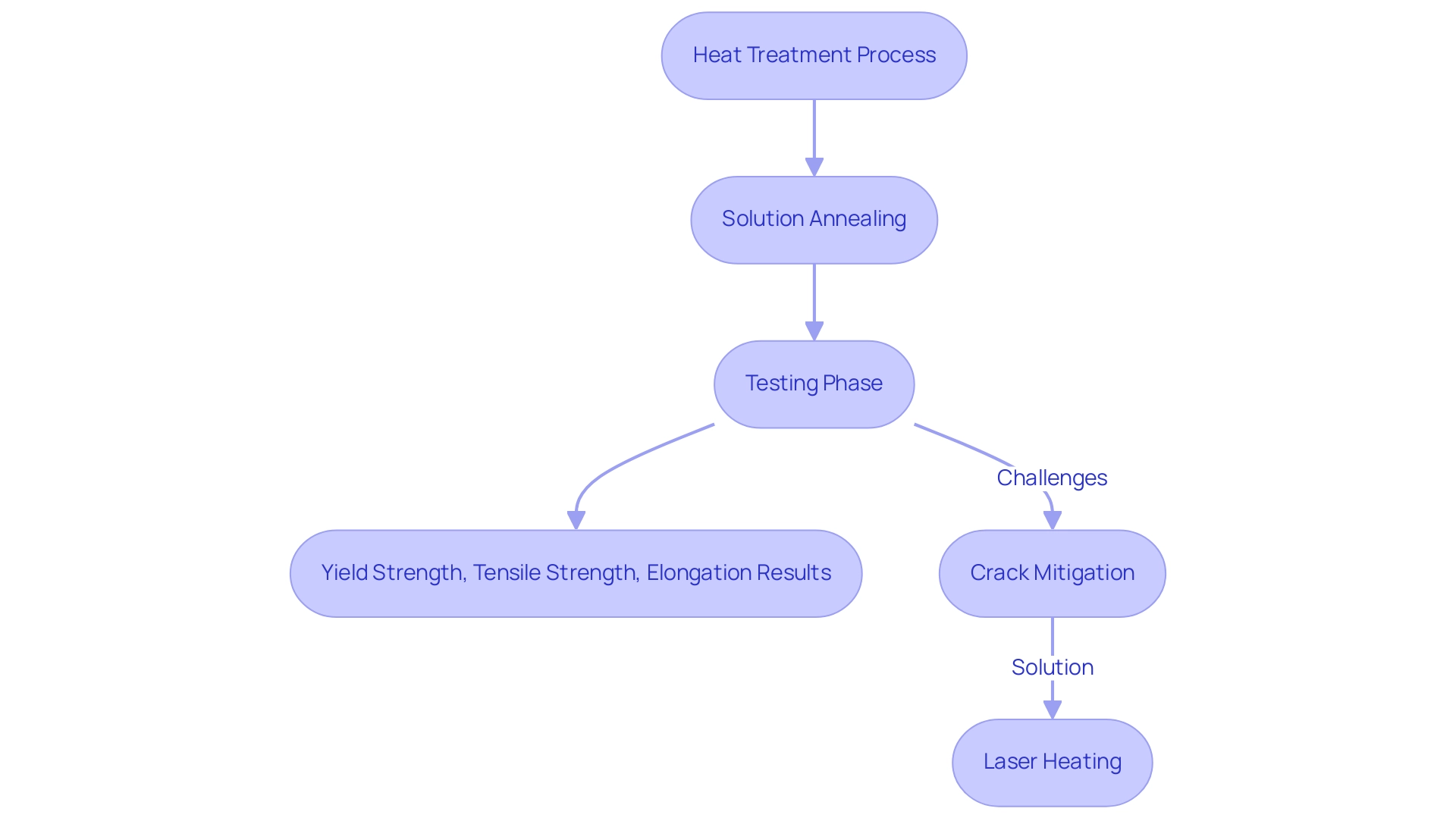
Corrosion Resistance of Heat-Treated Inconel 625: A Critical Analysis
Heat processing plays a crucial role in enhancing the corrosion resistance of alloy 625, effectively promoting a uniform microstructure that mitigates susceptibility to localized corrosion. This alloy demonstrates remarkable endurance against oxidation and pitting, particularly in aggressive environments, which is further enhanced through inconel 625 heat treatment processes. Notably, recent findings indicate that alloy 625 experiences a mass loss of only -5.91 mg/cm² at 927°C (1700°F) after 300 hours in hydrochloric acid conditions, underscoring its resilience.
Additionally, the threshold stress of alloy 625 is close to its yield strength when tested in a mixture of hydrogen sulfide and sodium chloride, highlighting its performance in harsh environments. Nevertheless, it is essential to recognize that while inconel 625 heat treatment significantly enhances corrosion resistance, the overall performance of alloy 625 remains contingent upon factors such as surface finish and specific environmental conditions. For instance, a study titled ‘Service in Chlorine-Based Media’ emphasizes the exceptional resistance of alloy 625 to halide attack in chlorine-rich environments, which is crucial for ensuring reliability in various industrial applications.
Understanding these interactions is vital for procurement managers to ensure the dependability of Inconel 625 in its intended applications. Furthermore, tables summarizing the chemical compositions and mechanical properties of Alloy 625 provide additional context that can aid in decision-making, as noted by expert Arsalan Nazim:
Optimization of the Mechanical and Corrosion Resistance of Alloy 625 through Aging Treatments.
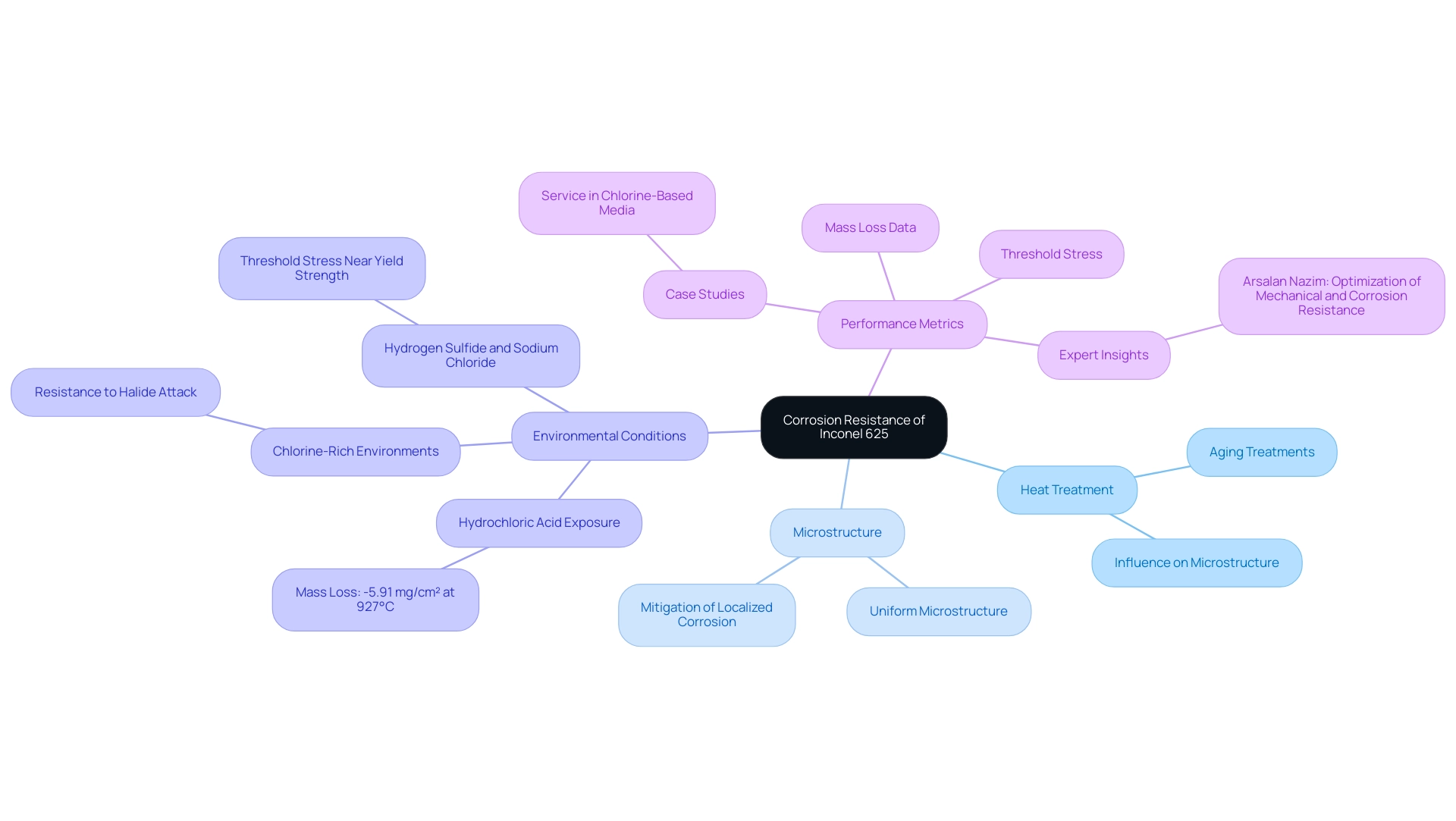
Conclusion
Inconel 625 emerges as a remarkable nickel-chromium alloy, distinguished not only by its exceptional strength but also by its remarkable resistance to high temperatures and corrosive environments. The alloy’s low phosphorus content enhances its performance, making it a prime choice for critical applications in aerospace, marine, and chemical processing industries. The exploration of advanced heat treatment techniques reveals their significant role in optimizing the mechanical properties of Inconel 625, providing procurement managers with crucial insights into material selection for demanding operational conditions.
Heat treatment processes such as solution annealing and aging are pivotal in enhancing the alloy’s microstructure, strength, and ductility. The impact of these techniques on Inconel 625 underscores the necessity for tailored approaches to meet specific application requirements. Research highlights the correlation between microstructural changes and mechanical performance, reinforcing the importance of understanding these processes for predicting the alloy’s behavior under stress.
Furthermore, the corrosion resistance of heat-treated Inconel 625 is noteworthy, demonstrating exceptional endurance against oxidation and localized corrosion in aggressive environments. This resilience is vital for ensuring reliability in various industrial applications. Ultimately, the strategic application of heat treatment not only enhances the mechanical properties of Inconel 625 but also ensures its integrity and performance in extreme conditions, solidifying its status as a high-performance material of choice for procurement managers navigating complex industrial demands.




